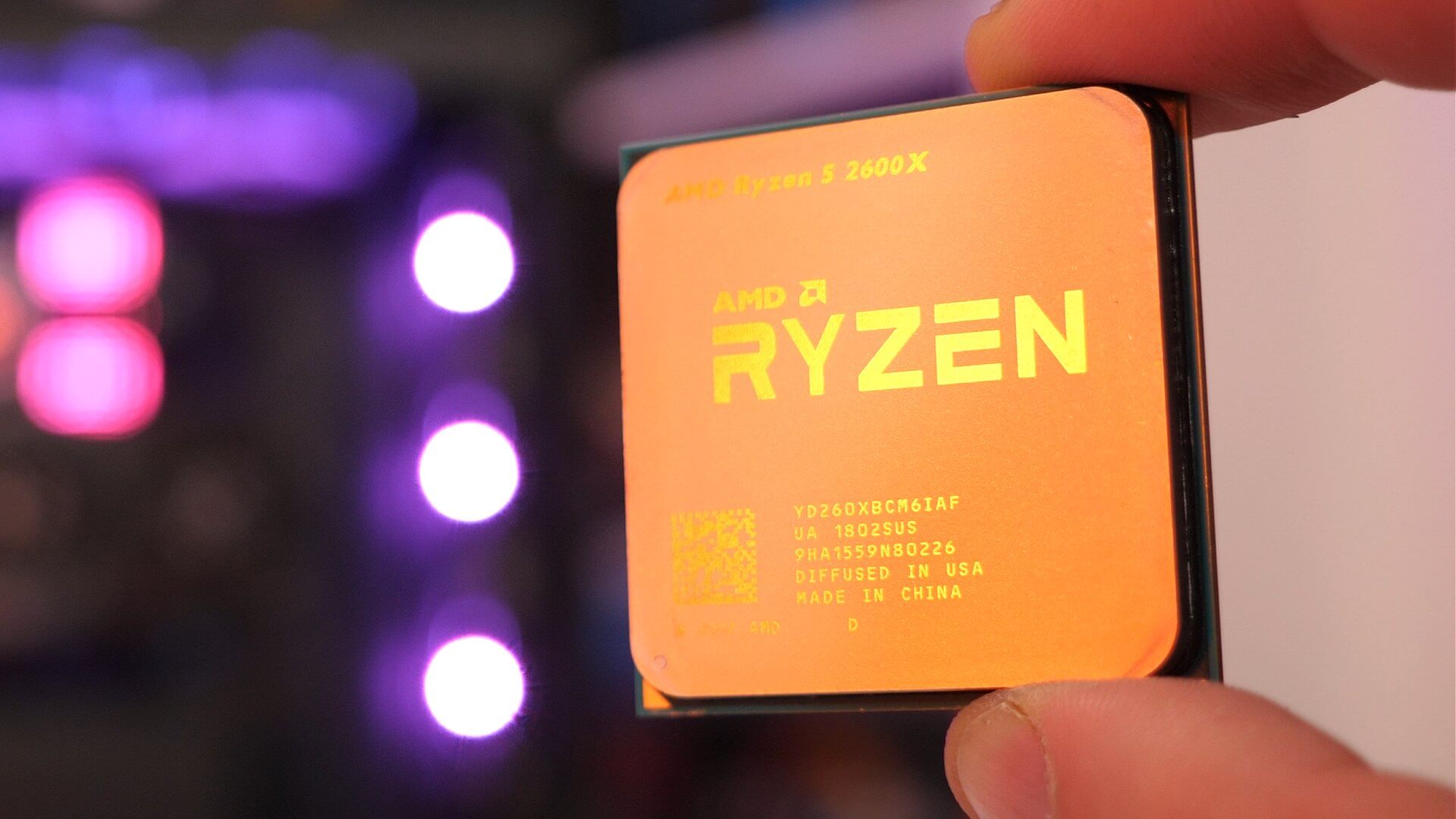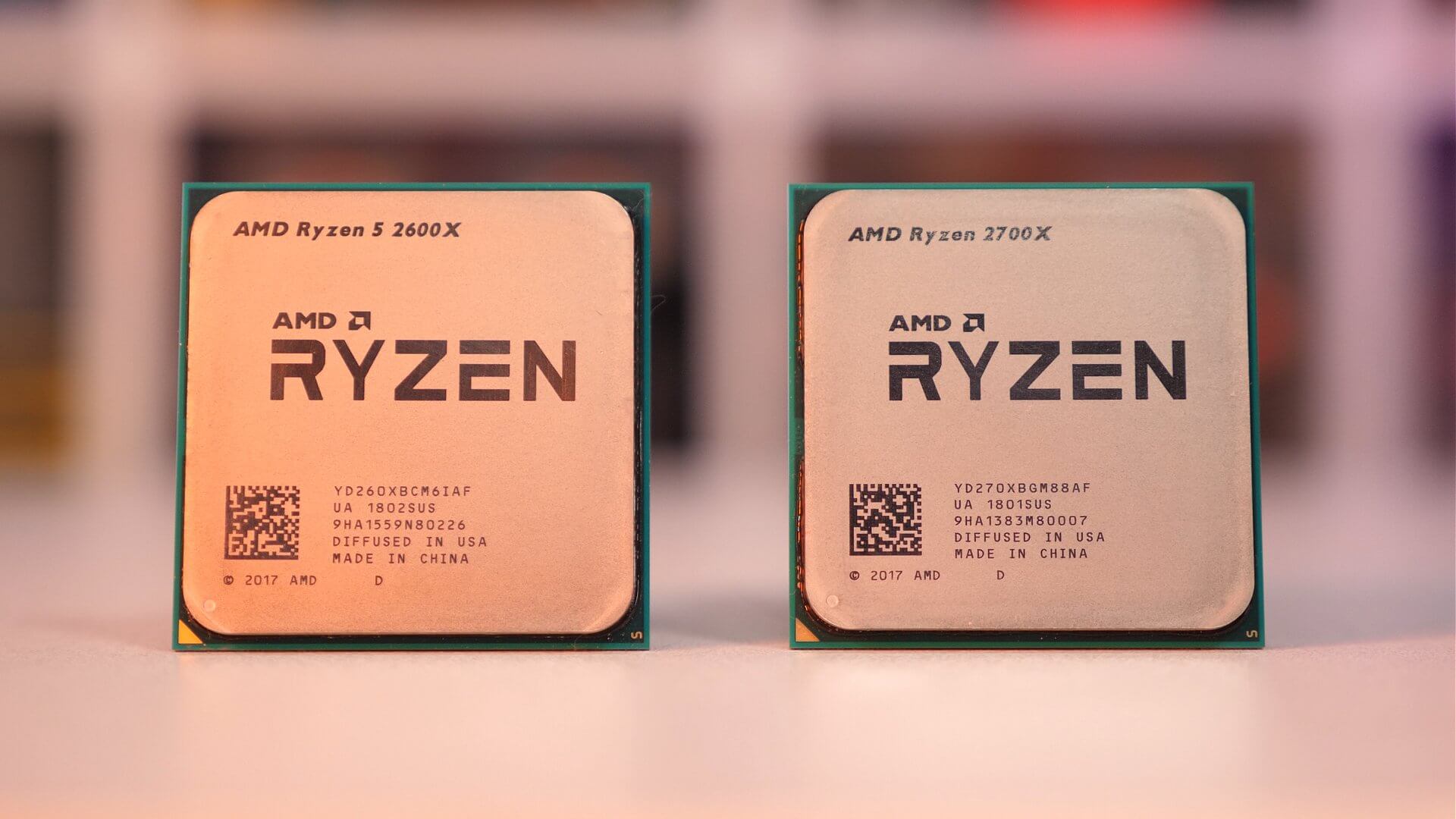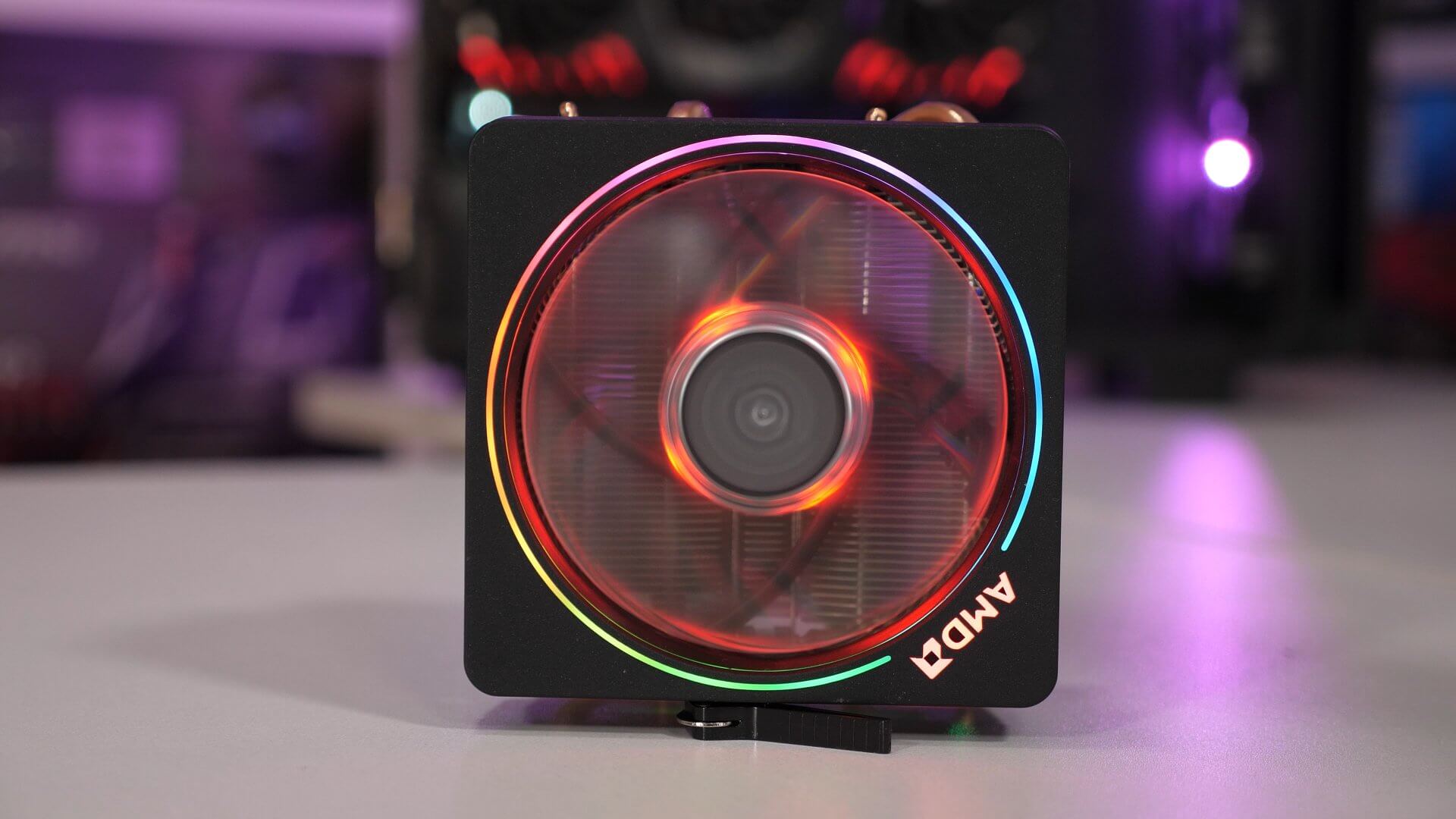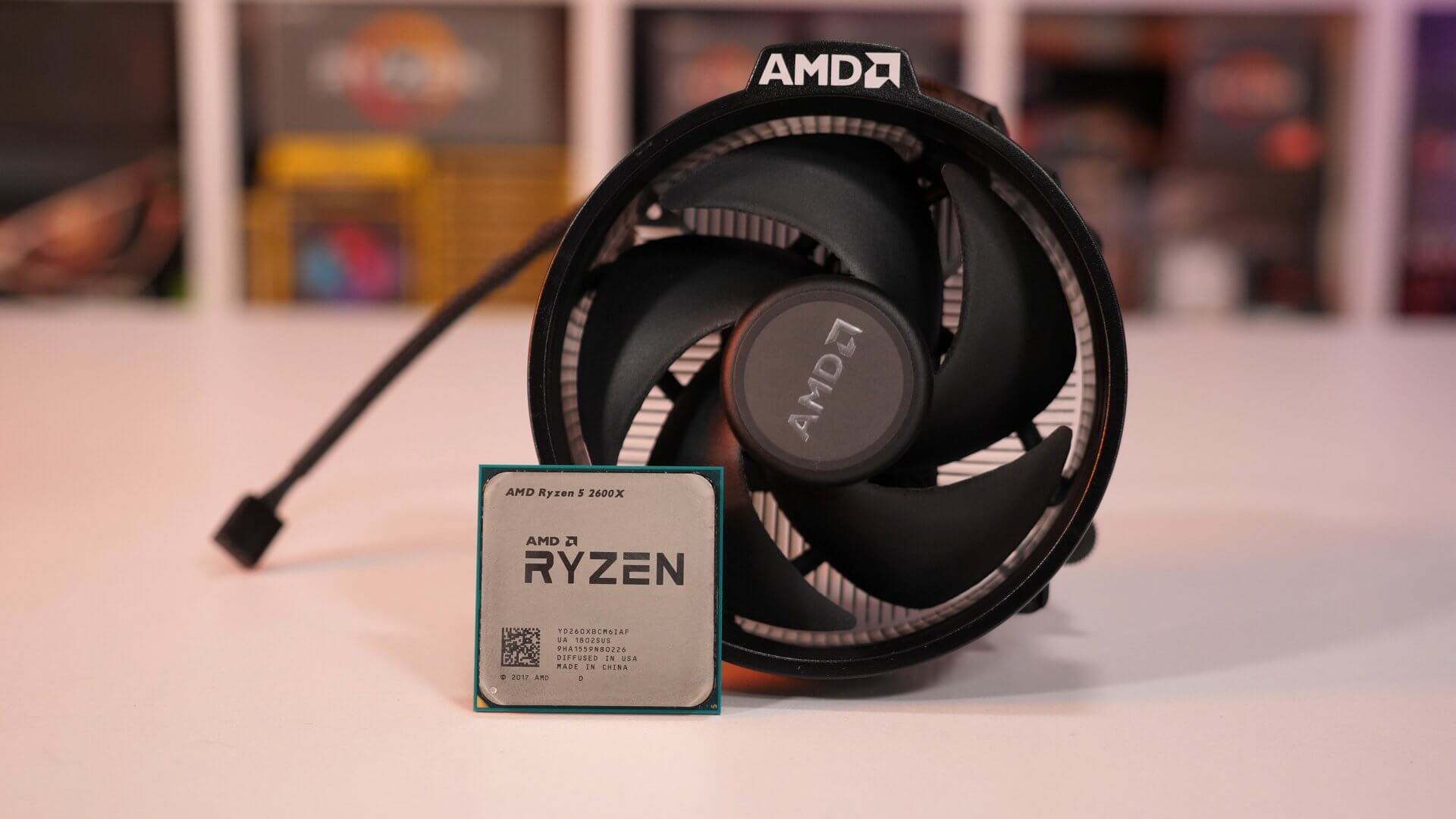This might be surprising, but it's been more than a year since we tested AMD's original Ryzen CPU series based on the 14nm Zen architecture, a launch that represented a clean slate for AMD and wound up being a huge success, especially among value-oriented system builders. After seeing several processor generations from AMD that couldn't keep up with rival Intel chips, it's been great to have more competition in the CPU sector and it raises the question of whether we can expect similar results from the new Zen+ architecture.
Based on the 12nm process, AMD sent us its new Ryzen 7 2700X and Ryzen 5 2600X processors for testing. The company tells us that Zen+ offers a reduction in cache latency (anywhere from 13% up to 34%), an 11% reduction in DRAM latency, IPC improvements of approximately 3%, and improved memory support for greater frequencies. So that all sounds good.
In addition to all of that, being that Zen+ is based on the Globalfoundries 12LP process (LP for "Leading Performance"), you can reportedly expect these chips to handle higher frequencies and offer improved power consumption. AMD says this new process provides transistor performance that is 10-15% better than the previously used process. In short, we are seeing a 300MHz increase in clock speed up to 4.3GHz, a 50mV reduction in core voltage, and a possible all-core overclock of around 4.2GHz.
AMD has announced four 2nd-gen Ryzen CPUs so far, and today we are testing the X models. The non-X 2600 and 2700 are available, but AMD forbid us testing them in time for today's release. So we've pre-ordered those models and will have a proper review of them shortly.
| Ryzen 7 2700X | Ryzen 7 2700 | Ryzen 5 2600X | Ryzen 5 2600 | |
| MSRP | $330 | $300 | $230 | $200 |
| Cores / Threads | 8 / 16 | 8 / 16 | 6 / 12 | 6 / 12 |
| Base Frequency | 3.7 GHz | 3.2 GHz | 3.6 GHz | 3.4 GHz |
| Boost Frequency | 4.3 GHz | 4.1 GHz | 4.2 GHz | 3.9 GHz |
| L2 Cache | 4MB | 4MB | 3MB | 3MB |
| L3 Cache | 16MB | 16MB | 16MB | 16MB |
| Memory Config | Dual-Channel | |||
| Max Mem Support | DDR4-2933 | |||
| TDP | 105 W | 65 W | 95 W | 65 W |
| Box cooler | AMD Prism RGB | AMD Spire RGB | AMD Spire | AMD Stealth |
Things worth noting from the table above is that the 2700X is an 8-core/16-thread CPU with a 3.7 GHz base and a 4.3 GHz max boost frequency. The 2600X is a 6-core/12-thread CPU that operates 100 MHz lower for the base and boost clocks.
The 2700X costs $330 and the 2600X just $230. So that means the 2700X is coming in well under the 1800X and 1700X launch prices, matching the 1700. The 2600X sits between the launch price of the 1600X and 1600, so AMD looks as though they're going to continue to be extremely competitive on pricing.
Those are the highlights and while there are more things we could talk about, such as XFR2 or SenseMI Technology, we're going to skip over that for now and discuss our testing methods before jumping right into the results.
Testing Notes
For testing the new second-gen Ryzen CPUs, we're primarily using the Asrock X470 Taichi Ultimate, but we've also double checked the results using the Gigabyte X470 Aorus Gaming 7. Both boards worked flawlessly. The memory of choice is G.Skill's SniperX DDR4-3400 CL16 and I've merely loaded the XMP profile. All testing has been conducted with the box coolers unless specified otherwise and this goes for all CPUs benchmarked in this article. For the unlocked Intel K processors the Corsair H110i v2 was used.
The first-gen Ryzen CPUs which include the Ryzen 7 1800X and Ryzen 5 1600 have been tested on the Asrock X370 Taichi using G.Skill's FlareX DDR4-3200 CL14 memory. Unfortunately, I didn't have more time to include additional first-gen Ryzen CPUs to the results, but these two parts will give us a good idea of what we're looking at in terms of gains for the newer processors.
All of the data has been updated for this review, meaning it's all fresh and has been gathered in the past two weeks, so I couldn't simply just carry over the 1600X or 1700 data from previous tests, those need to be retested. All testing was done with the latest drivers, Windows updates, motherboard BIOS updates, game and application updates.
Throughout the testing we'll be looking at stock out of the box performance as well as overclocking. The first-gen Ryzen CPUs have been overclocked to 4GHz, while I was able to get the 2600X stable at 4.1GHz and the 2700X at 4.2GHz. I should note that it was difficult getting my 2700X stable at 4.2GHz.
Hitting 4.2GHz on all cores wasn't easy and it required 1.4 volts to pass our hour-long Blender stress test. For this overclock I used the Corsair H150i Pro. The 2600X failed the stress test at 4.2GHz, forcing our chip down to 4.1GHz which was disappointing, but maybe we got a bad chip, time will tell. Also remember nothing is guaranteed with overclocking and as we put this article together we don't know if these are good or bad overclocks. AMD suggests that overclocks are now in the range of 4.2GHz, but we're taking that with a grain of salt until there is more data.
Still, the good news is that our 2600X was stable at 4.1GHz using the Wraith Spire box cooler and I'll include temperatures at the end of the review. Due to time constraints, as mentioned before, we did run out of time for testing and including as many first-gen Ryzen CPUs as we'd have liked to. We also didn't have time to overclock the Skylake-X CPUs, but is something we'll do in a future article.
That's about everything, time to get into the benchmarks.
Benchmarks
Before we get into the application and gaming benchmarks, here's a quick look at memory bandwidth performance. Despite using slightly faster DDR4-3400 memory, the second-gen Ryzen CPUs are comparable to the original parts with a throughput of around 39GB/s.
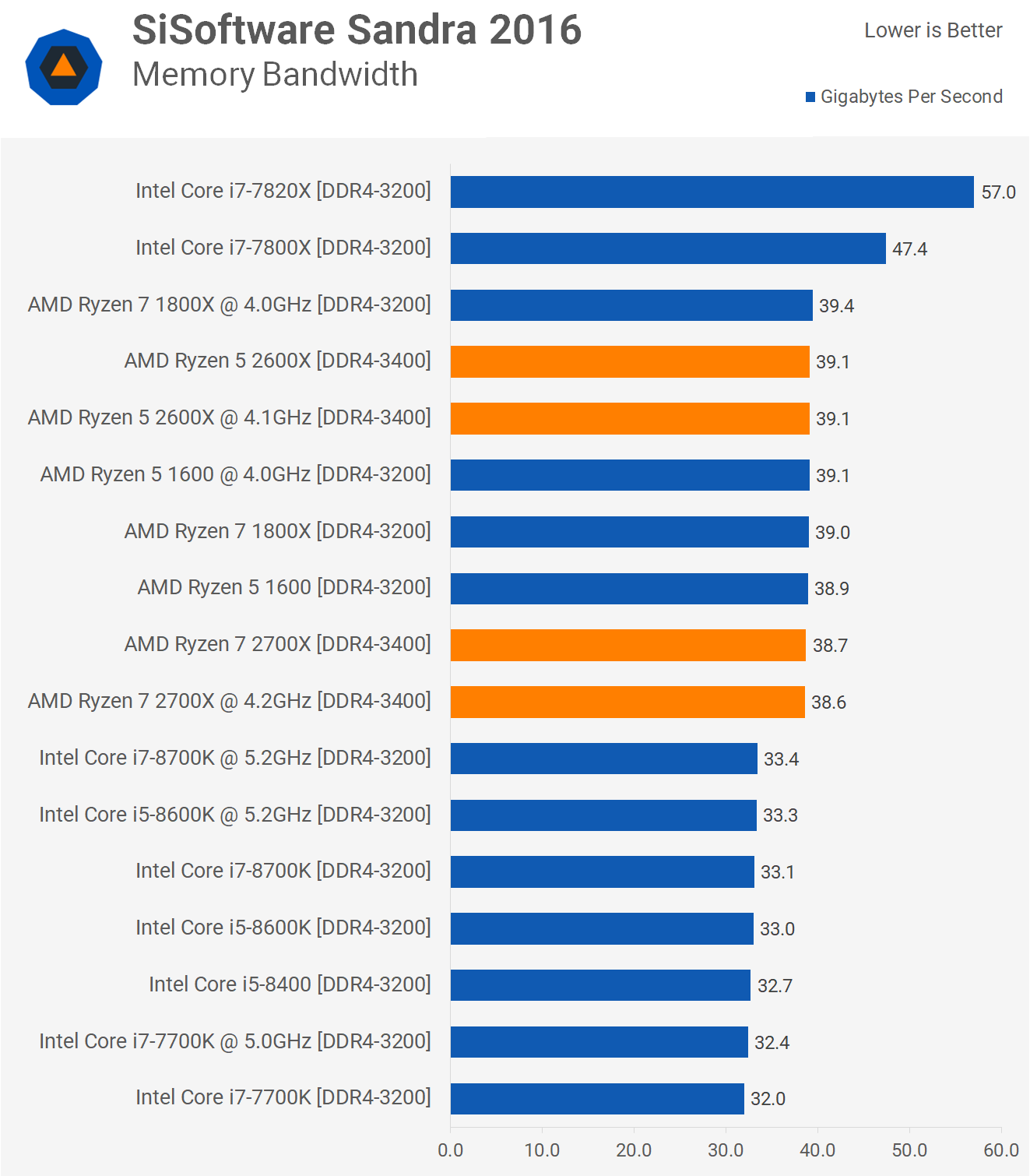
Overclocked memory bandwidth remains much the same but I'll likely explore memory scaling performance in greater detail during a future article.
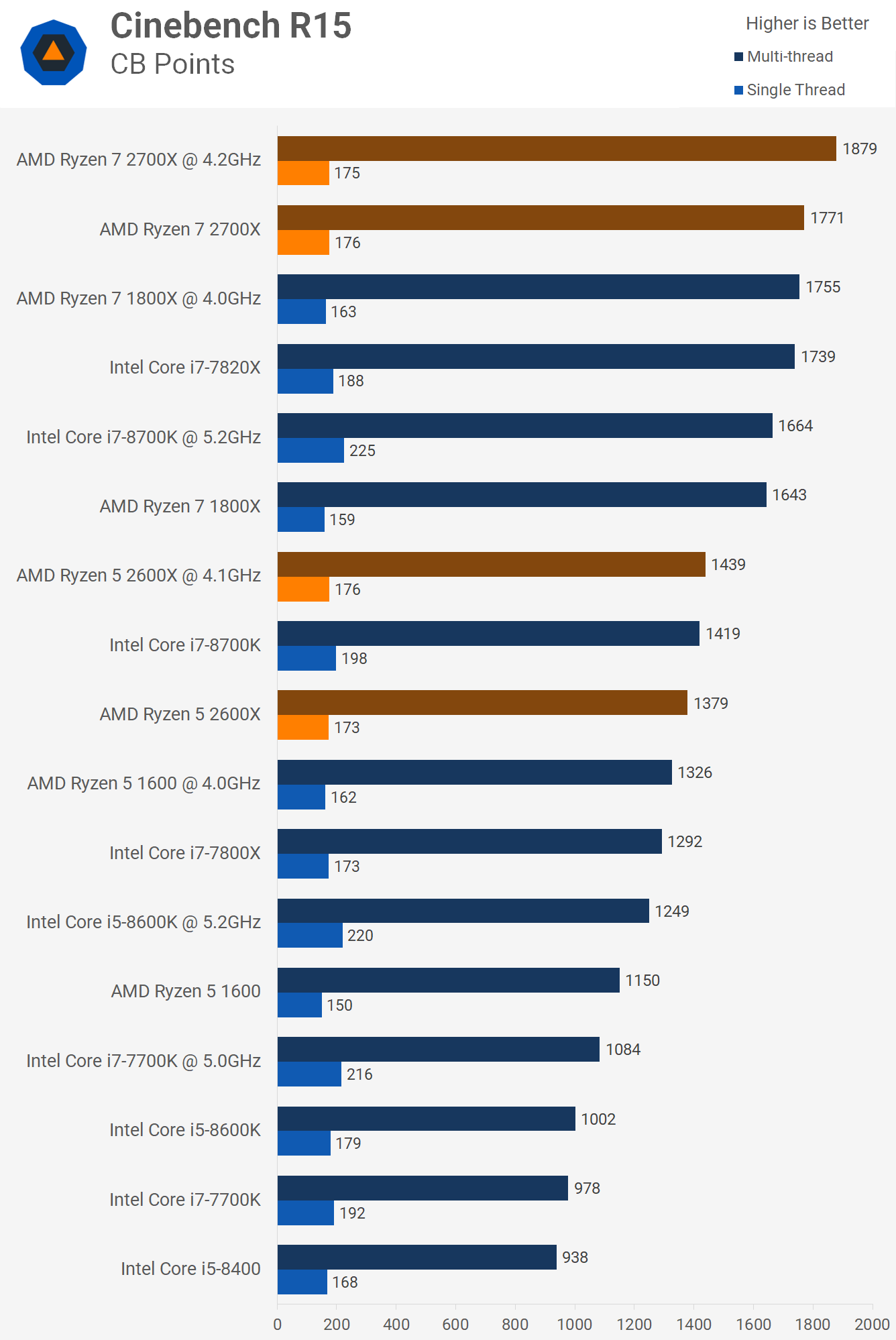
Above are Cinebench R15's results and here we see some really nice gains. Please note that we don't report the absolute best score but rather the average of six back to back runs and the 2700X does deliver slightly better results with an upgraded cooler.
The 2700X improves on the 1800X's single thread score by 11%, though just 8% for the multi-threaded score, but that was enough to edge out the Core i7-7820X. Meanwhile, the Ryzen 5 2600X looks impressive compared to the non-X 1600, and although it only matched the single-thread score of the 7800X, it was 7% faster for the multi-threaded test.
The 2700X is a beast when overclocked, producing a multi-threaded score of 1879pts or 7% faster than a 1800X that is maxed out at 4GHz. It also beat the 5.2GHz 8700K by a convincing 13% margin. The 2600X on the other hand was less impressive, improving on its stock score by just 4%.
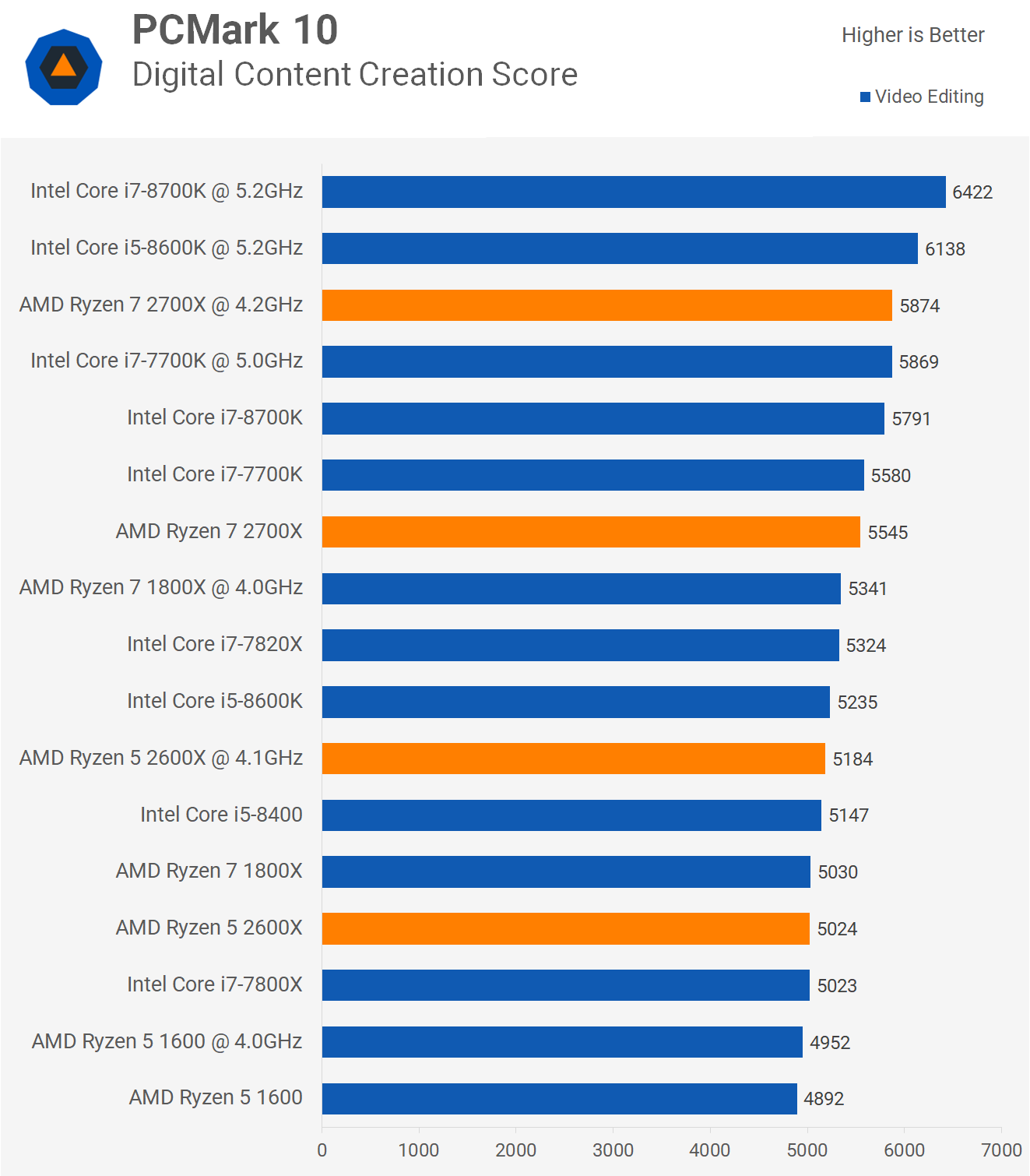
The Ryzen 7 2700X was 10% faster than the 1800X for the PCMark 10 video editing test and this placed it roughly on part with the 7700K and ahead of the 7820X and 8600K. The 2600X managed to match the R7 1800X and i7-7800X, though it was only slightly faster than the R5 1600.
Overclocked, the 2700X was 6% faster in this test while the 2600X was just 3% faster. It's already looking like overclocking the Ryzen 5 2600X is going to be a waste of time.
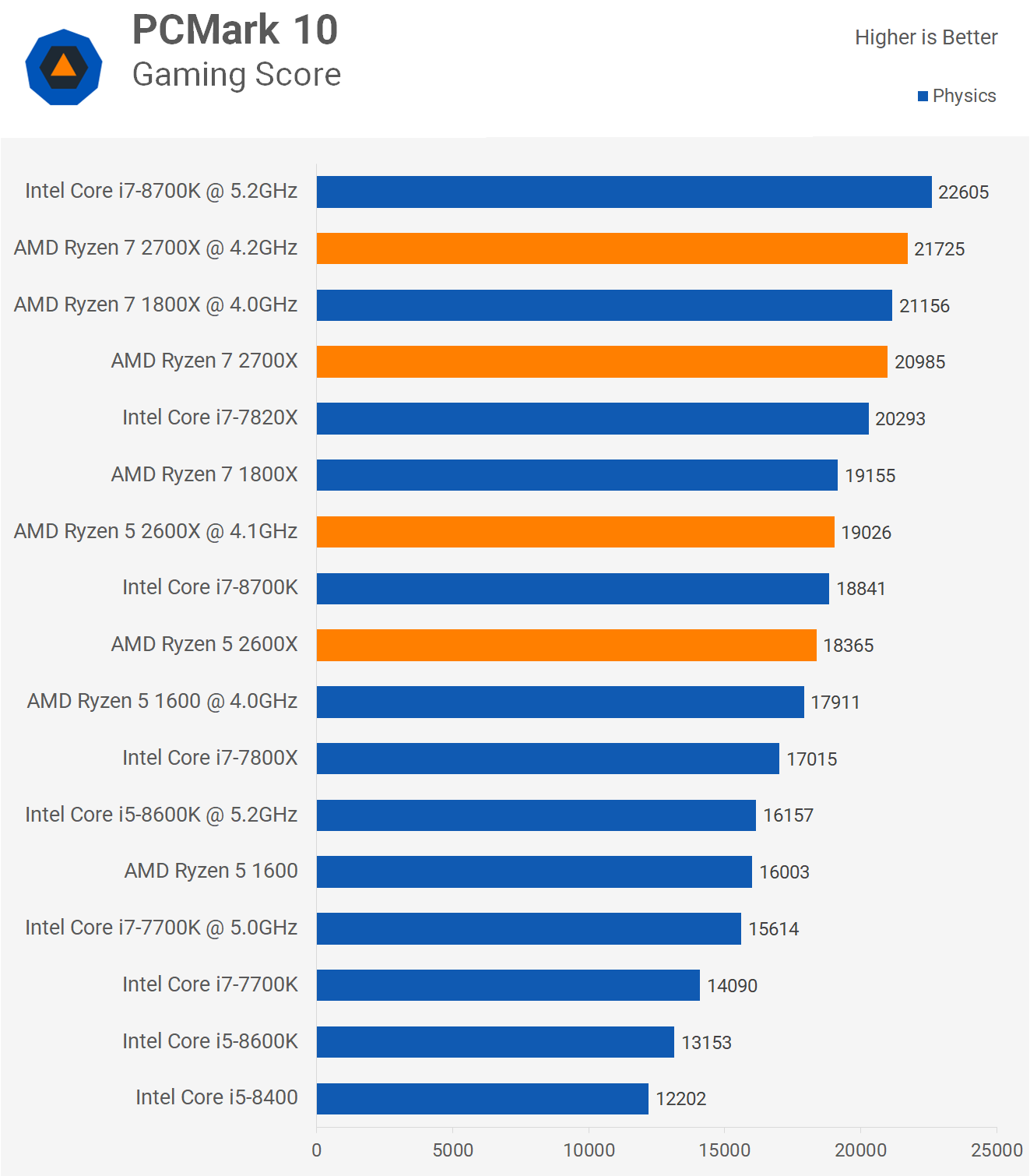
The Ryzen 7 2700X dominated the PCMark 10 physics benchmark with a score of 20985pts, once again 10% faster than the 1800X. This time the 2600X was 15% faster than the 1600 which is an impressive gain, though of course the margin will be reduced compared to the 1600X.
Overclocked, both the 2700X and 2600X eke out a little extra performance, though in this test it's hardly worth getting excited over.
